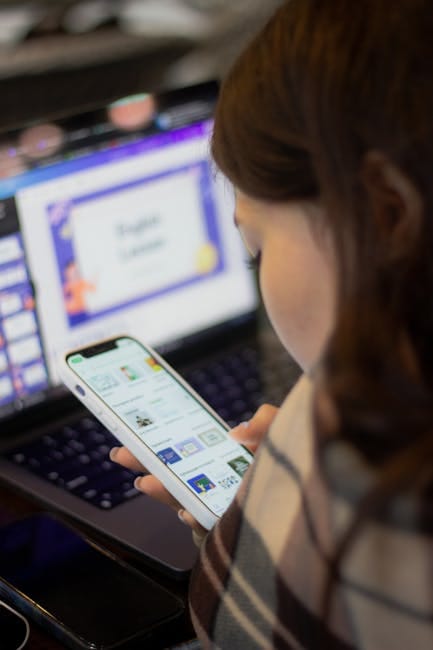How to Make Money Online by Developing Virtual Reality Language Learning Apps
In today’s digital era, the demand for innovative educational tools is skyrocketing. Among these, virtual reality (VR) language learning apps are gaining significant traction. This blog post explores the potential of making money online by developing VR language learning apps, providing you with actionable insights, statistics, and examples to capitalize on this growing market.
The Growing Demand for Language Learning Apps
Language learning has always been in high demand, with millions of people worldwide eager to master new languages for personal, professional, or educational purposes. According to a report by Zion Market Research, the global language learning market is expected to reach approximately $21.2 billion by 2024.
This surge is fueled by the increasing accessibility of digital devices and the growing popularity of online learning platforms. Among these platforms, VR language learning apps stand out due to their immersive experience, which enhances engagement and retention.
Why Choose Virtual Reality for Language Learning?
Virtual reality offers a revolutionary approach to language learning by simulating real-life environments and interactions. Here are some key reasons why VR is an excellent choice for developing language learning apps:
- Immersive Experience: VR enables learners to practice languages in simulated real-world settings, making learning more practical and effective.
- Enhanced Engagement: The interactive nature of VR keeps learners engaged, reducing dropout rates and improving learning outcomes.
- Personalized Learning: VR apps can tailor the learning experience to individual needs, allowing users to progress at their own pace.
Steps to Develop a VR Language Learning App
Creating a successful VR language learning app involves several crucial steps. Here is a detailed roadmap to guide you through the process:
Research and Identify Your Niche
Before diving into development, conduct thorough market research to identify gaps and opportunities in the language learning space. Consider factors such as:
- Target audience demographics and preferences
- Popular languages and learning trends
- Competitors and their offerings
By understanding your niche, you can tailor your app to meet specific needs, increasing its chances of success.
Design Engaging and User-Friendly Interfaces
The design of your VR app is crucial for user engagement. Focus on creating intuitive interfaces that are easy to navigate. Incorporate elements such as:
- Interactive tutorials and guides
- Gamified learning experiences
- Progress tracking and feedback mechanisms
Develop High-Quality Content
Content is king in language learning apps. Ensure your app offers comprehensive and high-quality content that covers various aspects of language acquisition, such as:
- Vocabulary building exercises
- Grammar and pronunciation tutorials
- Cultural immersion experiences
Consider collaborating with language experts to ensure accuracy and effectiveness.
Choose the Right VR Platform and Technology
Selecting the appropriate VR platform is critical to the success of your app. Popular platforms include Oculus, HTC Vive, and Google Cardboard. Consider factors such as:
- Compatibility with various devices
- Ease of use and accessibility
- Cost-effectiveness and scalability
Implement Monetization Strategies
To make money from your VR language learning app, consider implementing effective monetization strategies. Here are some options:
- Freemium Model: Offer basic features for free while charging for premium content or advanced features.
- Subscription Model: Provide access to all features for a monthly or annual fee.
- In-App Purchases: Allow users to purchase additional resources, such as vocabulary packs or cultural experiences.
- Advertising: Partner with relevant brands to display ads within your app.
Marketing Your VR Language Learning App
Once your app is developed, effective marketing is essential to reach your target audience and drive downloads. Here are some strategies to consider:
Leverage Social Media and Influencers
Utilize social media platforms to promote your app and engage with potential users. Collaborate with influencers in the education and technology sectors to reach a wider audience.
Optimize for App Stores
Ensure your app is optimized for app store listings by using relevant keywords, engaging visuals, and compelling descriptions. Positive user reviews and ratings can also boost visibility.
Offer Free Trials and Promotions
Encourage users to try your app by offering free trials or promotional discounts. This can help attract new users and convert them into paying customers.
Case Studies: Successful VR Language Learning Apps
To inspire your journey, let’s explore some successful VR language learning apps:
App 1: Mondly VR
Mondly VR is a popular language learning app that leverages virtual reality to provide immersive conversational experiences. With over 30 languages available, Mondly VR allows users to practice real-life conversations with virtual characters.
App 2: ImmerseMe
ImmerseMe offers a unique VR language learning experience by simulating real-world scenarios, such as ordering food at a restaurant or checking into a hotel. The app covers nine languages and emphasizes cultural immersion.
Conclusion: Unlocking the Potential of VR Language Learning Apps
The potential to make money online by developing VR language learning apps is immense. By capitalizing on the growing demand for immersive and interactive educational tools, you can create a successful app that not only generates revenue but also transforms the way people learn languages.
With the right research, design, content, and marketing strategies, you can unlock the lucrative opportunities in the VR language learning market. Start your journey today and contribute to the future of education!

